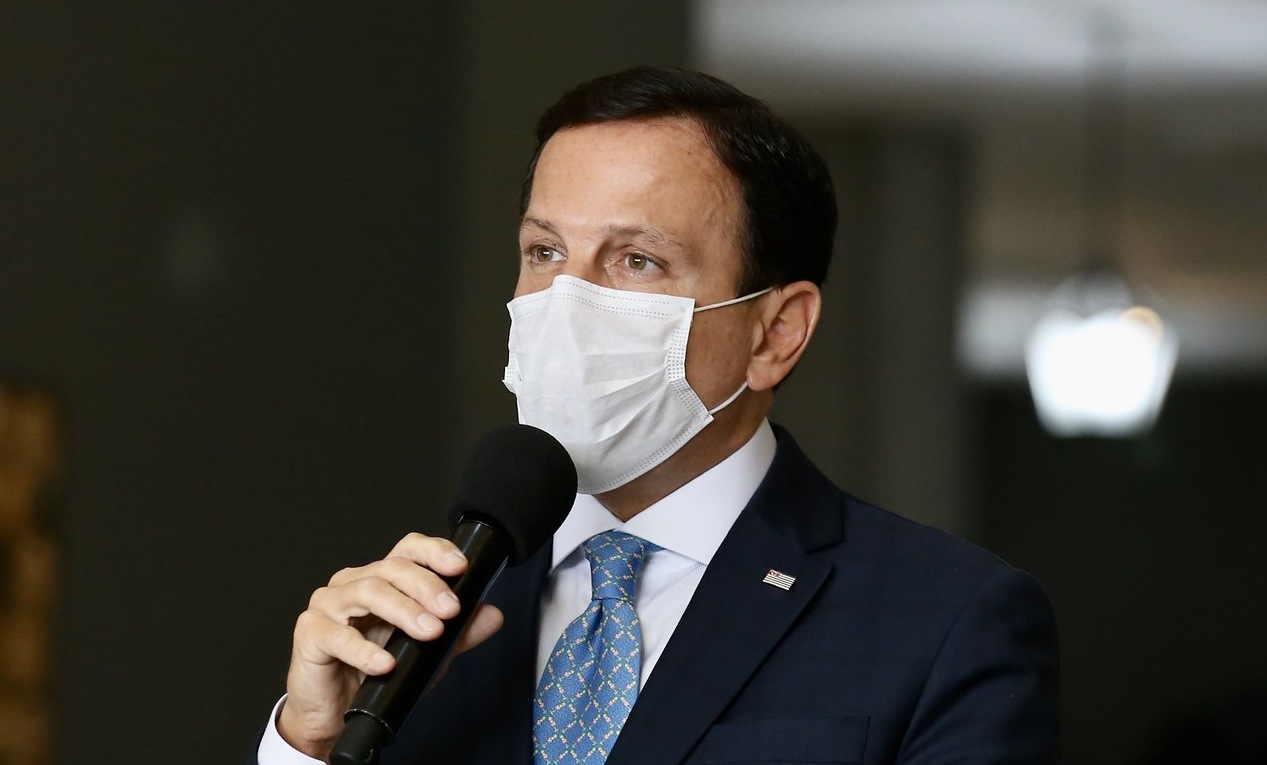SÃO PAULO, BRAZIL – The governor of São Paulo, João Doria, announced on Wednesday, May 27th, that he will launch the plan for the reopening of economic activities throughout the state as of June 1st.

However, the plan is not yet the end of the quarantine enforced to contain the coronavirus and initially scheduled to end on May 31st. “The quarantine will be maintained, but with the conscious resumption of some economic activities,” he said at a press conference on Wednesday.
In practice, this means that commercial sectors, such as malls, may open next Monday in the capital, which has 85 percent of its ICU beds occupied and despite the fact that the state has not yet succeeded in reducing its mortality rate.
In countries such as Italy or Spain, the implementation of reopening only started when the Covid-19 death curve began to reverse. On May 8th, the state government had stated that it would only relax quarantine after a sustained reduction of new cases for 14 days had been achieved and when the ICU occupancy rate fell below 60 percent.
Currently, nearly 75 percent of ICU beds allocated for Covid-19 treatment are filled throughout the state. In Greater São Paulo, it reaches almost 88 percent, and in the city of São Paulo, where it will be possible to visit shopping malls as early as Monday, 85 percent of ICU beds are taken.
Nevertheless, the government has introduced the plan, named by the governor as a “conscientious resumption “, to be put into practice between June 1st and 15th. The Government of São Paulo’s argument is that the reopening is gradual and in different stages, according to the municipality. “If we need to take a step back, we won’t hesitate to do so,” Doria added. The government relies on the fact that the number of deaths is now rising at a slower pace.
The plan is divided into five stages:
Stage one, red: maximum alert, with the release of essential services only.
Stage two, orange: restrictive measures, but also including flexibility in some sectors, such as real estate services, vehicle dealerships, trade, and shopping malls, with restricted flow, time and distancing measures between people.
Stage three, yellow: flexibility through controlled opening of more economic sectors, such as bars and beauty salons.
Stage four, green: still a partial opening, but including all sectors above and others, such as gyms. Restrictive measures still in place.
Stage five, blue: controlled normal, with all sectors in operation, including cinemas, theatres, and events.
The application of these stages will differ between administrative regions. The State is divided into 17 administrative regions, in addition to the capital. This means that while one part of São Paulo may enter stage four, another may still be in stage one.
Two criteria will determine the stages: the development of the epidemic – based on the number of cases, hospitalizations and deaths – and the health care system’s capacity – based on the number of ICU beds available to treat Covid-19 patients for every 100,000 inhabitants and on the occupation rate of these beds. Based on these indicators, a new rating for each region will be established every seven days.
The São Paulo State map yesterday showed that the regions will start this new stage next Monday in three different flexibilization stages. Greater São Paulo, Baixada Santista, and the region of Registro, remain in stage 1. Most of the State, including the capital and the regions of Campinas, Taubaté, Franca, and Ribeirão Preto, among others, are now entering stage 2. The regions of Barretos, Araraquara, São Carlos, Bauru, and Presidente Prudente are already in stage 3.
The statewide quarantine in São Paulo was decreed on March 24th. Since then, social isolation was renewed three times, the last on May 11th, expiring on May 31st. In this last extension, cases in the state had increased by 3,300 percent in inland and coastal areas, and 770 percent in the metropolitan region and government projections showed that the number of Covid-19 deaths could reach 11,000 by June.
Since the start of the quarantine, Doria had been under pressure from various economic sectors to suspend the restrictive measures. Protesters marched on Paulista Avenue every Sunday to protest against the governor, asking for his removal, and the end of quarantine. Data released by CAGED (General Register of Employed and Unemployed Persons) released on Wednesday show that the state lost 336,755 formal jobs in March and April.
Under pressure, Doria even rehearsed flexibility, announcing the São Paulo Plan on April 22nd, but with the caveat that he would only suspend quarantine if social isolation rates increased, something that did not occur in a significant way. At the outset, the ideal rate of isolation was 70 percent, a percentage never reached. The government then took a step back in the resumption plan and, days later, renewed the quarantine.
However, the situation now is still far from being under control. By Tuesday, São Paulo had recorded 6,423 deaths from the coronavirus and 86,017 confirmed cases of the disease. São Paulo still does not show signs that the death curve from the disease is beginning to decrease, according to data reported daily by the Ministry of Health.
Source: El País

